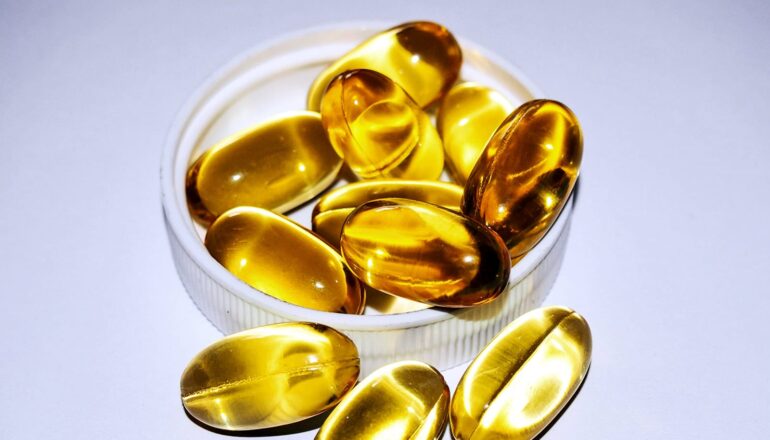Bacteria could make vitamins cheaper and greener
- Bacteria can be engineered to produce more vitamin K₂, making vitamins cheaper and greener than traditional methods.
- A new study reveals how to rewire bacteria to overproduce vitamin K₂ by tuning substrate supply, enzyme expression, and gene order simultaneously.
- The researchers used a three-pronged approach: biosensing, genetic engineering, and mathematical modeling to understand the control system for vitamin K₂ production in bacterial cells.
- By lifting the natural production ceiling, engineered bacteria can produce more vitamin K₂, reducing costs and bringing fortified foods and supplements closer to reality.
- The study’s findings open up new possibilities for transforming nutrition and medicine with vitamin-producing microbes, but further research is needed to fully understand their inherent checks and balances.

A new study reveals how to rewire bacteria to produce more vitamin K₂ for supplements and fortified foods.
Engineering microbes to overproduce vitamins provides a greener and more cost-effective alternative to chemical synthesis or extraction from plants and animals.
However, bacterial cells typically limit their production to self-sustaining levels. By dissecting the control system for the vitamin K₂ precursor, the researchers have identified how substrate availability and genetic architecture impose a production ceiling as well as how those limits can be lifted.
“Vitamin-producing microbes could transform nutrition and medicine, but we must first decode their inherent checks and balances,” says Caroline Ajo‑Franklin, co-corresponding author of the study, a professor of biosciences, director of the Rice Synthetic Biology Institute, and a Cancer Prevention and Research Institute of Texas (CPRIT) Scholar.
“Our work shows how L. lactis [Lactococcus lactis] finely tunes its internal supply of the K₂ precursor, allowing us to rewire it with precision.”
The study, published in the mBio journal, focuses on the unstable intermediate compound that channels all forms of vitamin K₂.
The researchers employed a three-pronged approach: biosensing, genetic engineering, and mathematical modeling. Because the precursor is difficult to detect, the team built a custom biosensor in a different bacterium. This sensor is thousands of times more sensitive than conventional methods and requires minimal lab equipment.
Next, the researchers used genetic tools to alter the levels of enzymes in the biosynthetic pathway. By measuring precursor output under different conditions, they fed the results into a mathematical model of the pathway. Initially, the model assumed an unlimited precursor supply, but predictions did not align with laboratory results.
“Once we allowed for depletion of the starting substrate, the model output matched our experimental data,” says Oleg Igoshin, co-corresponding author and professor of bioengineering and biosciences.
“It became clear that cells hit a natural production ceiling when the substrate runs low.”
Data and modeling indicated that L. lactis maintains precursor levels at an optimal balance, high enough for its own needs but low enough to avoid toxicity. Simply overexpressing pathway enzymes did not increase output beyond the threshold because precursor materials became limited, much like attempting to bake more cookies with extra baking sheets but without enough flour.
The order of enzyme-encoding genes on DNA also influenced precursor levels: Rearranging these genes altered how much intermediate the cell produced. This suggests an additional layer of evolutionary regulation that has not been well understood.
“By tuning substrate supply, enzyme expression and gene order simultaneously, we can push production above the natural ceiling,” says Siliang Li, the first author of the study and a former graduate student who is now a postdoctoral fellow at Rice.
This insight opens the door to engineering L. lactis or other food-grade bacteria to produce more vitamin K₂ in fermentation processes or even in probiotic formulations.
“Enhanced production could reduce the need for feedstocks and lab space, ultimately lowering costs and bringing fortified foods and supplements closer to reality,” says Jiangguo Zhang, co-first author and a Rice graduate student.
This study was supported by CPRIT and the National Science Foundation and facilitated by the Rice Synthetic Biology Institute.
Source: Rice University
The post Bacteria could make vitamins cheaper and greener appeared first on Futurity.
